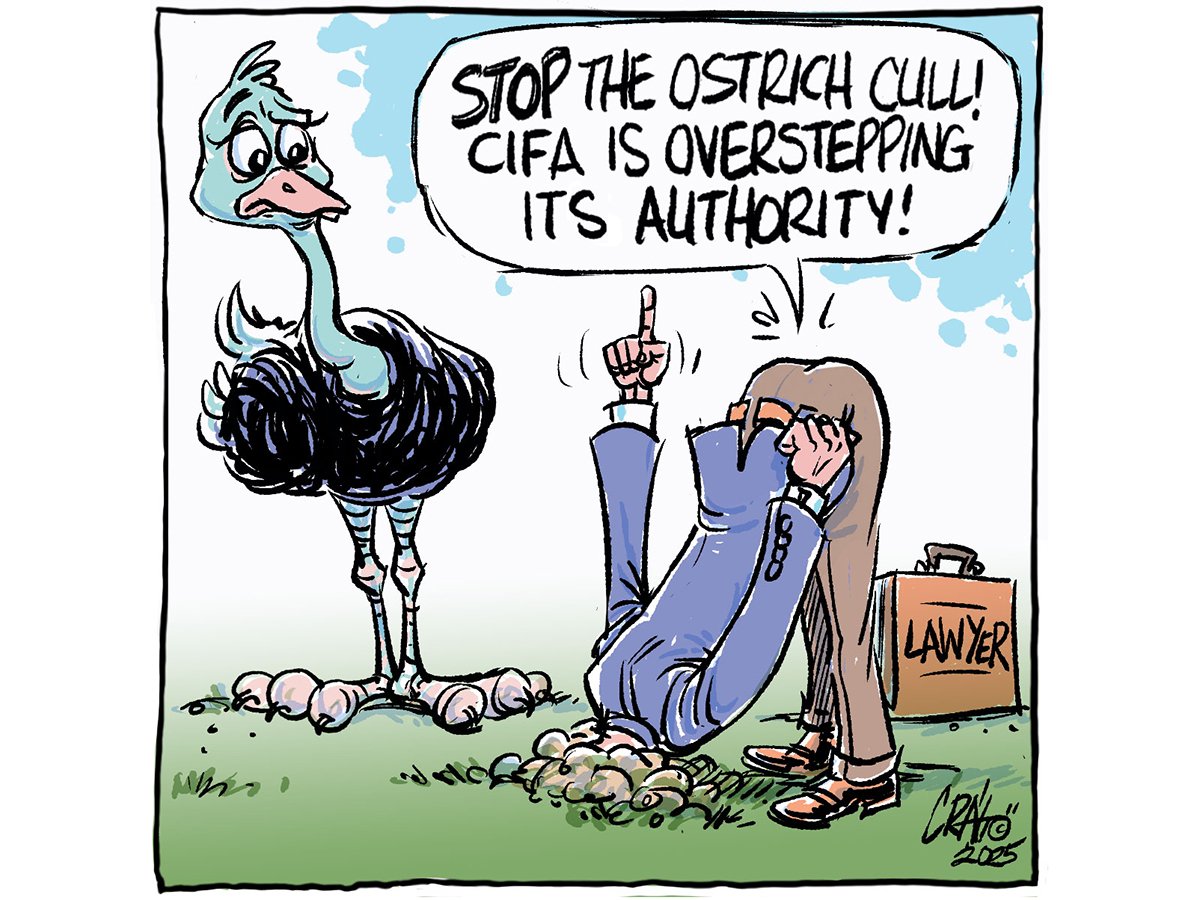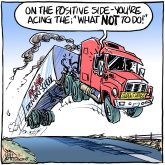THE glint of sun on stubble is so pretty, you almost forget the acres that didn’t get in as you stand in a patch of winter sun.
With the farm buttoned up for winter and wood smoke rising in cold, straight plumes against a December sky, it’s time to take stock of things: what worked, what didn’t and what needs changing in the months ahead, behind and beyond the farm gate.
It has been a rough few years for Canada’s farmers: drought; BSE; Avian influenza; allegations of countervail, and when that didn’t work, dumping, against hogs. Record low commodity prices for some crops and new farm programs for others that require a three-day short course to understand. Increasing environmental compliance costs and decreasing farm voice. Not to mention the if-it-wasn’t-so-serious-it-might-be-funny alarm with which baby boomers have dropped spuds, pasta, bread and other healthy foods like the proverbial hot potato in response to their 50-something girths.
Read Also

The Canadian Food Inspection Agency’s animal health efforts require producer support
Livestock producers should be concerned by how an ostrich farm is using crowd funding to help it defy a Canadian Food Inspection Agency order to destroy more than 300 birds.
For many, farm equity – created and passed down by hard-working men and women who broke the land and nurtured it into productivity – has become farm debt.
Beaming 4-H parents still nod in excitement as children, proudly clutching ribbons, scan the crowd for their eyes. But for this generation of farm families, encouraging sons and daughters to take over the family farm is fraught with unprecedented questions and unprecedented risk.
For a country so hooked on sustainability, you’d think ensuring the sustainability of Canada’s farmers would be the first priority of government.
Pivotal players in a primary sector, farmers take sun and seeds and soil and water and smarts and turn them into food. It’s a kind of magic, bred in the bone from a lifetime of waking early to help in the barn, of watching parents “figure it out” on the kitchen table every winter, of helping to work up a crop in the spring, tend it over summer and take it off in the fall.
Year after year, it is a dance that resonates through the family to its youngest member, imparting a sense of rural rhythm that lasts a lifetime.
Sure, a motivated kid from the city can study farming and make a go of it, but no amount of training is going to turn displaced workers into farmers.
When governments allow the future of farming to become so uncertain that young people turn away from the land, ancestors weep. And communities shudder.
Where does Canada stand in its support for farming? This October, Ontario’s Huron County Federation of Agriculture asked me to speak on that. The picture is not pretty.
According to the 2003 Organization for Economic Cooperation and Development report on measures of support to agriculture, Canada’s farmers are losing ground.
Per farmer support in Canada during 2000-02 averaged $10,000 US, among the lowest of all OECD countries and almost half the $19,000 received by American farmers.
Put anther way, Canadian farmers received 53 percent lower levels of support than American farmers. While per farmer support in Canada fell nine percent below average OECD levels, it rose in the United States, exceeding those levels by 73 percent.
Measured on a per hectare basis, support for farming in Canada during 2000-02 declined by 57 percent from 1986-88 levels and now falls 72 percent below OECD averages, again among the lowest of all member nations.
During this same period, support to American farmers increased by 14 percent. As a result, Canada’s farmers received 51 percent lower levels of per hectare support than their American counterparts.
As a proportion of gross farm receipts, support to Canadian farmers in 2000-02 declined by 44 percent from 1986-88 levels. Canadian farmers now receive 39 percent less support as a proportion of farmgate receipts than the OECD average.
During 2000-02, total per capita support for farming in Canada declined by 33 percent from 1986-88 levels and now falls 35 percent below average OECD support levels. During the same period, per capita support to American farmers increased by 18 percent and now averages close to 20 percent above OECD levels.
Canadian farmers received 55 percent lower levels of per capita support than did their American counterparts.
And it’s not as if Canada’s farmers are slouches on an economic level. During 2000-02, Canada’s farmers contributed, on a proportional basis, close to 60 percent more to the gross domestic product and created 12 percent more jobs than American farmers. During this time, Canadians continued to enjoy the third lowest food costs of all OECD member nations.
Canada’s farmers are losing ground.They deserve the policy respect of government.
Commodity politics are undermining farm politics so Canada’s farmers need to speak in one voice. A minority government provides a unique opportunity.
Wendy Holm is an agrologist, resource economist and author based in Bowen Island, B.C. The opinions expressed in this column are not necessarily those of The Western Producer.














